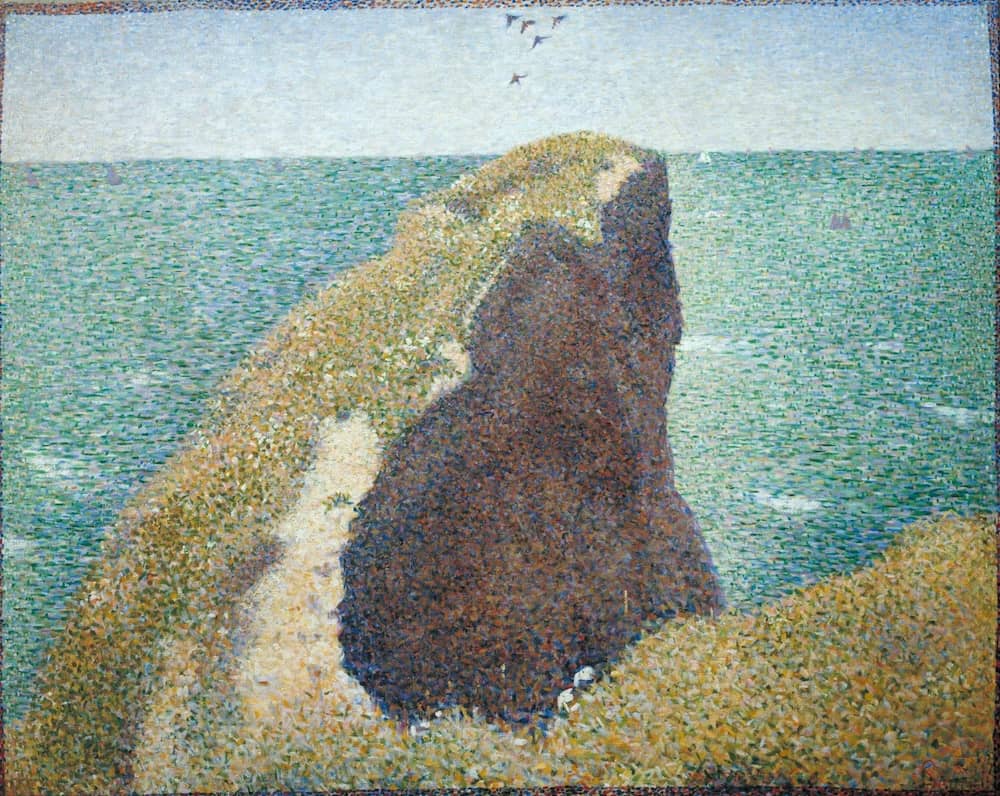Le Bec du Hoc, Grandcamp by Georges Seurat

In this work the painter is handling masses. The main diagonal curves across the canvas. The earth and rock are bearing down with all their weight upon the sea that washes them. The effect is one of a steep precipice, an abyss.
The distance is given by the birds overhead and the boats on the horizon. We see how Seurat has kept strictly to the most elemental aspects of his subject-water, air, and rock. Like some work by Bruegel the Elder, this one suggests space and immensity. Art critics Feneon wrote:
M. Seurat's seascapes give off calm and melancholy. They ripple monotonously as far as the distant point where the sky comes down. One rock rules them tyrannically - the Bee du Hoc."
The range of proportions and dimensions has been admirably rendered from the large to the small, from the heavy to the light, and from the luminous to the shadowed. Seurat has varied his brush strokes to suit what he evokes, and he has varied his punctuations with great flexibility. He has suggested a kind of dizziness at the spectacle of infinity.
The technique has something of the Japanese print. The immensity is conveyed by contrasting elements - the flight of birds, the barely visible tiny boats, the surface textures of the sea, and the jutting rock above it.
Georges Seurat sold this canvas for 5oo francs in 1887.
















